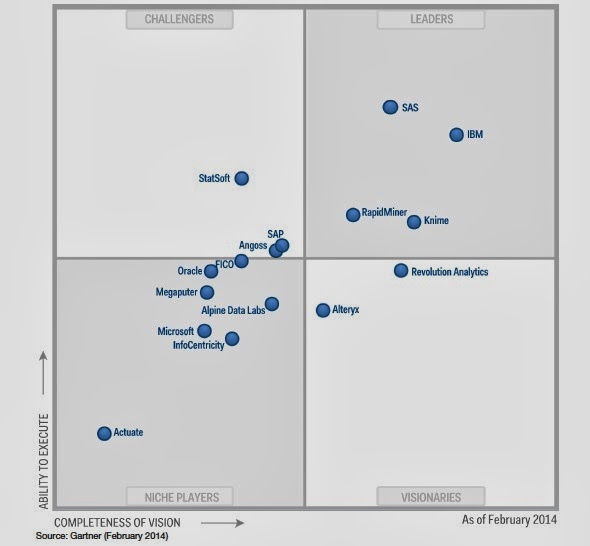This blog post will look at how you can go about installing ORE in your environment.
The install involves a 4 steps. The first step is the install on the Oracle Database server. The second step involves the install on your client machine. The third steps involves creating a schema for ORE. The fourth steps is connecting to the database using ORE.
In this Part A blog post I will cover the first two steps in this process. The other steps will be coved in another blog post.
NB : A the time of writing this blog post ORE 1.4 cannot be installed on a 12c database if it has a CDB/PDB configuration. If you want to use ORE with 12c then you need to do a traditional install that does not create a CDB with a PDB. The ORE team are working hard on this and I'm sure it will be available in the next release (or two or ...) of ORE.
Step 1 : Installing ORE on the Database Server
Before you being looking at ORE you need to ensure that you have the correct version of database. If you have version 11.2.0.3 or 11.2.0.4 then you can go ahead and perform the installation below. But if you have 11.2.0.1 or 11.2.0.2 then you will need to apply a patch to your database. See my note above about 12c.
Download the Oracle R Distribution from their website. Download here.
Although you can use the standard version of R, Oracle R Distribution comes with some highly tuned packages. If you are going to use the standard R download then you will need to ensure that you download the correct version. ORE 1.4 will require R version 3.0.1. Yes this is not the current version of R.
Accept at the defaults during the installation of ROracle, and within a minute or two ROracle will be installed.
Download the Oracle R Enterprise software. Download here. This will include the Server and Supporting downloads.
Uncompress the downloaded ORE files and go to the server directory. Here you will find the install.bat (other other similar name for your platform).
Make sure your ORACLE_HOME and ORACLE_SID environment variables are set.
A number of environment and environment variables are checked. When prompted accept the defaults.
When prompted for the password for the RQSYS user, enter an appropriate password and take careful note of it.
Now go back to the Oracle download page for ORE and download the supporting packages. Unzip the downloaded file. Noting the directory that they were installed in you can now load them in R. To do this open R and run the following commands. You will need to change the directory to where these are located on your server.
install.packages("C:/app/supporting/ROracle_1.1-11.zip", repos=NULL)
install.packages("C:/app/supporting/DBI_0.2-7.zip", repos=NULL)
install.packages("C:/app/supporting/png_0.1-7.zip", repos=NULL)
install.packages("C:/app/supporting/cairo_1.5-5.zip", repos=NULL)
Or you can use the R Gui to import these packages
WARNING:If you are installing on a Windows server you may encounter some issues when importing these packages. I will have a separate blog post on this soon.
NB: The ORE installation instructions make reference to Cario-_1.5-2.zip. This is incorrect. ORE 1.4 comes with Cario-_1.5-5.zip.
At this point, assuming you didn't have any errors, you now have ORE installed on your server.
Step 2 : Installing ORE on the Client
Download the Oracle R Distribution from their website. Download here.
NOTE: If your database and client are on the one machine then there is no need to install ROracle again.The client install is much simpler and less involved. After you have installed ROracle the next step is to install the client packages for ORE. These can be downloaded from here.
After you have unzipped the file you can use the import packages from zip feature of the R Gui tool or using RStudio. Then import the supporting packages that you also installed as part of the server install.
Now you can install the supporting packages. Unzip them and then use the R Gui or RStudio to importing them. These supporting packages can be downloaded from here.
That should be the client R software and ORE packages installed on your client machine. The next steps is to test a connection to your Oracle database using ORE. Before you can do that you will need to setup a Schema in the database to use R and also grant the necessary privileges to your other schemas that you want to access using R
Check out my next blog post (Installing ORE - Part B) for Steps 3 and 4.
Also check out the Part C blog post on how to resolve a potential install issue on a Windows server.
